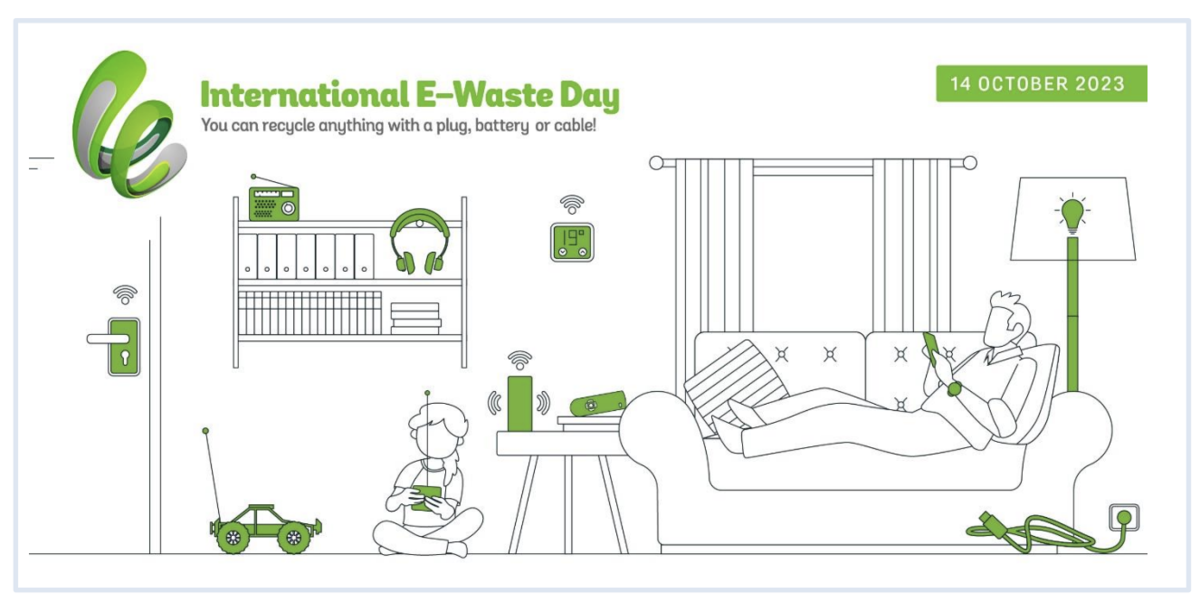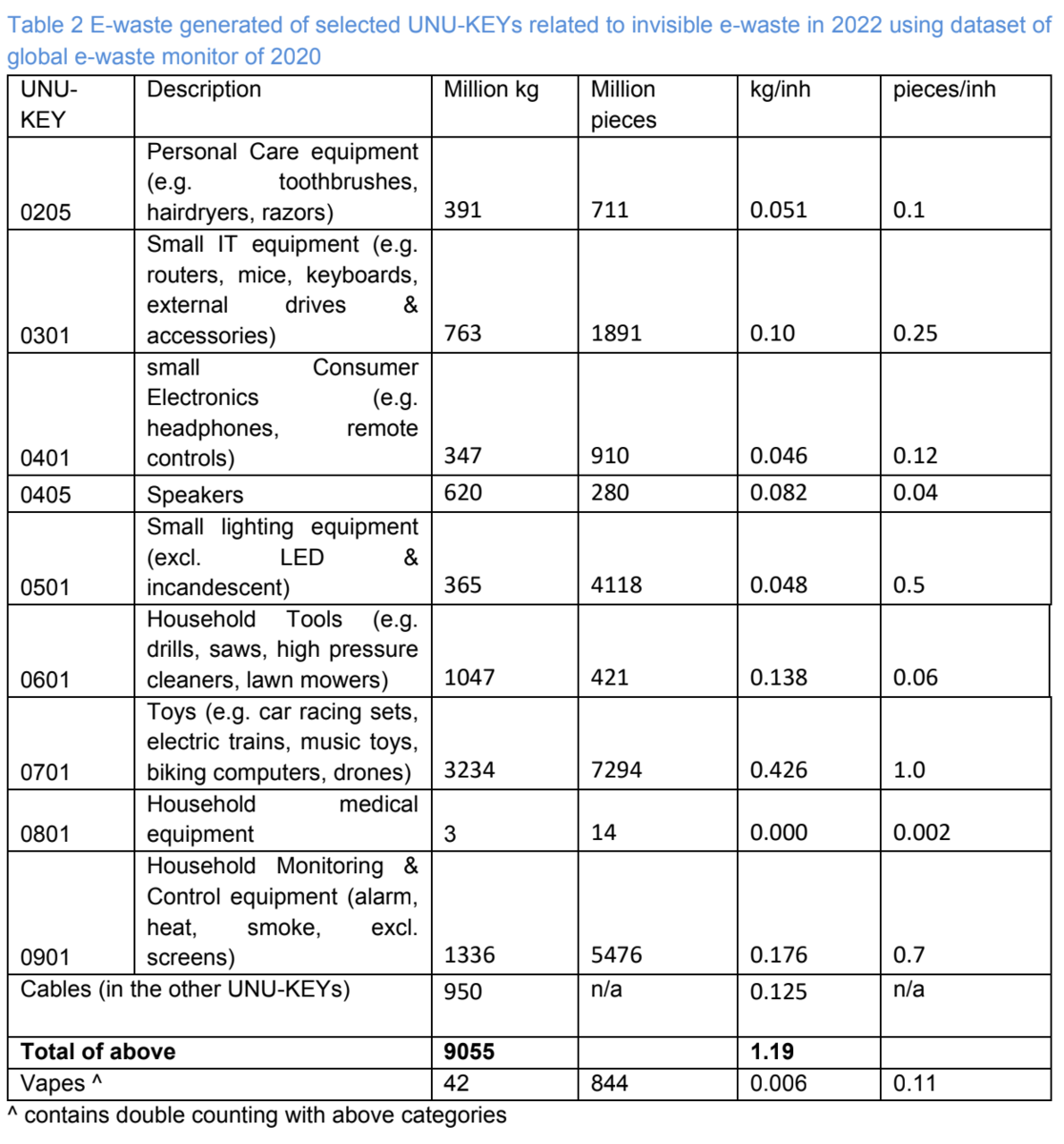The mountain of ‘invisible’ e-waste and its US$10 billion worth of raw materials
Electronic waste is more than unwanted laptops, printers, and smartphones, with e-toys, e-bikes and vape pens adding to the detritus we discard.
The Waste Electrical and Electronic Equipment (WEEE) Forum estimates that around 1/6th of e-waste, 9 billion kilograms per year, is ‘invisible’ in that it isn’t recognised as e-waste by consumers.

Devices that slip into this category include cables, e-toys, e-cigarettes, e-bikes, power tools, smoke detectors, USB sticks, wearable health devices, and smart home gadgets. Many of those devices sit around our homes and eventually end up in landfill.

But many of them are able to be recycled, with the precious metals in them particularly sought after. The invisible e-waste piling up globally has an estimated value of nearly US$10 billion, according to the United Nations Institute for Training and Research (UNITAR), which was commissioned to calculate global e-waste in the run-up to the 6th annual International E-Waste Day taking place on Saturday as New Zealanders go to the polls.
According to the UN data, New Zealand generated 16 million kilograms of invisible e-waste in 2022, made up of 32 million devices.
Where invisible e-waste comes from
Of the 9 billion kg of invisible e-waste worldwide, 3.2 billion kg, or 35%, is in the e-toy category, including race car sets, electric trains, music toys, talking dolls and other robotic figures, biking computers, and drones. in all, says the WEEE Forum, around 7.3 billion individual items are discarded annually, “an average of about 1 e-toy for every man, woman and child on Earth”.
Vaping is adding to the e-waste pile, with around 844 million e-cigarette and vaping devices discarded annually. Cables are a major source of e-waste, with the UN estimating that 950 million kg of discarded cable, enough to circle the Earth 107 times, could be easily recycled to extract its precious copper.
Other examples of common, invisible e-waste items in households that tend not to make it to recyclers include toothbrushes, shavers, external drives and accessories, headphones and earbuds, remote controls, speakers, LED lights, power tools, household medical equipment, heat and smoke detectors.
“People tend to recognise household electrical products as those they plug in and use regularly. But many people are confused about the waste category into which ancillary, peripheral, specialist, hobby, and leisure products fit and how to have them recycled,” says Says Pascal Leroy, Director-General of the WEEE Forum.
In the European Union, the Extended Producer Responsibility (EPR) legislation has been in place for 20 years which has led to 55% of e-waste now being collected and reported.
“Still, according to the United Nations global e-waste monitor, other parts of the world show much slower growth rates in its collection, and globally, the reported average collection rate is just over 17%,” the WEEE Forum noted.
New Zealand is notorious for its low levels of e-waste recycling. By some measures, we produce around 80,000 tonnes of it each year and recycle just 2 - 3% of it, with no equivalent legislation putting little pressure on consumer goods makers to play a role in the recycling process.
